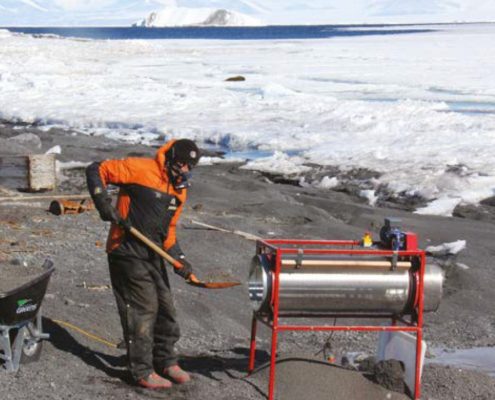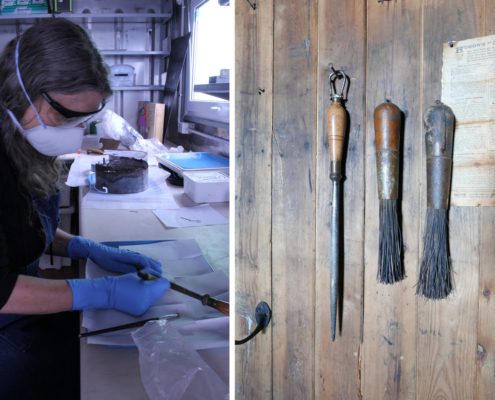Protecting and Repatriating Artefacts at Scott’s ‘Terra Nova’ hut
Dusty scoria from the stables at Cape Evans being fed into the trommel. © AHT/Al Fastier
A key project, in addition to maintenance and monitoring work at Scott’s Terra Nova hut at Cape Evans work was to reduce the dust levels from the scoria in the stables and western annex. This was important because scoria dust is abrasive to artefact surfaces in the area, and the dust also attracts moisture to the objects, accelerating corrosion or spot mould. The gravel layer was removed by wheelbarrow and sieved using a custom built ‘trommel’ to remove all of the sand and fines. Once cleaned the gravel was returned to the walkways and the result has been very successful. Heritage carpenter John Taylor says, “The result was clean pea sized scoria, and not a hint of dust to be seen.
(left) Conservation of the knife sharpening steel © AHT;
(right) Knife sharpening steel in situ in the galley at Cape Evans. © AHT
The artefacts looked great after a conservation brush-vacuum by the conservators and should gather less dust from now on.” While at Cape Evans, the team repatriated a knife steel that had been returned to the Trust via Stephen Hicks from the estate of Wing-Commander John Claydon. This artefact was conserved in the Trust’s conservation laboratory at Scott Base before being returned to the galley.
“I was thrilled to learn that my artefact was to be returned to its Antarctic home. Scott’s hut at Cape Evans is such a significant monument to the heroic age of polar exploration. It is only fitting that wherever possible it be restored to its previous living and working condition. Hats off to the wonderful efforts of the Antarctic Heritage Trust,” said Stephen Hicks.




